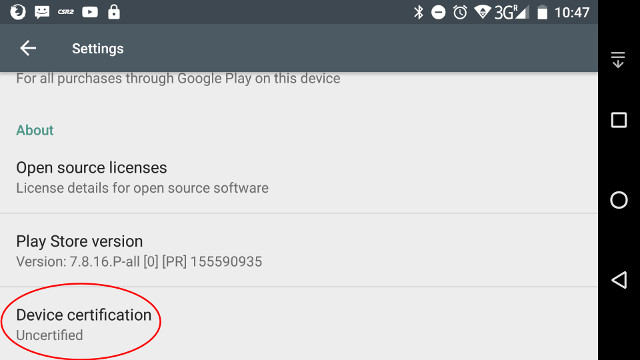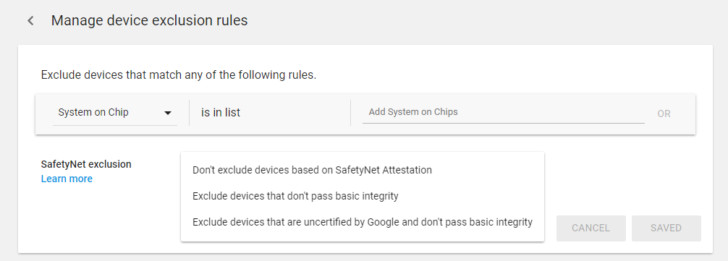There’s been at least two or three notable stories about the Play Store this week. It started with Netflix not installing from the Google Play Store anymore on rooted device, with unclocked bootloader, or uncertified devices, and showing as “incompatible”. AndroidPolice contacted Netflix which answered:
With our latest 5.0 release, we now fully rely on the Widevine DRM provided by Google; therefore, many devices that are not Google-certified or have been altered will no longer work with our latest app and those users will no longer see the Netflix app in the Play Store.
So that means you need to Google Widevine DRM in your device, which mean many Android TV boxes may stop to work with Netflix. You can check whether you device is certified by opening Google Play and click on settings, Scroll to the bottom and check Device Certification to see if it is Certified or Uncertified (H/T jon for the tip).
I tried this in my Chinese phone, and unsurprisingly it is “Uncertified”. AndroidPolice however successfully tested both Netflix 4.16 and Netflix 5.0.4 on an unlocked Galaxy S tab with Level 3 DRM and both worked. So the only drawback right now is that you can’t install Netflix from the Play Store, but it still works normally. Some boxes do not come with any DRM at all, which you can check with DRM info, and they may not work at all (TBC).
We’ve know learned this will not only affect Netflix, as developers will now be able to block installation of apps that fail “SafetyNet” as explained at Google I/O 2017:
Developers will be able to choose from 3 states shown in the top image:
- not excluding devices based on SafetyNet
- excluding those that don’t pass integrity
- excluding the latter plus those that aren’t certified by Google.
That means any dev could potentially block their apps from showing and being directly installable in the Play Store on devices that are rooted and/or running a custom ROM, as well as on emulators and uncertified devices ….. This is exactly what many of you were afraid would happen after the Play Store app started surfacing a Device certification status.
This would mean it might become more complicated to install apps from the Google Play store on some devices, and we may have to start to side-load apps again, or use other app store. That’s provided they don’t start to stop apps running all together. The latter has been possible for year, as for example many mobile banking apps refuse to run on rooted phones.
I’ll end up with a better news, as starting with Android O it will be possible to update Graphics Drivers from the Play Store, just like you would update an app. Usually, a graphics driver update would require an OTA firmware update, or flash a new firmware image manually, and it’s quite possible this new feature has been made possible thanks to Project Treble.

Jean-Luc started CNX Software in 2010 as a part-time endeavor, before quitting his job as a software engineering manager, and starting to write daily news, and reviews full time later in 2011.
Support CNX Software! Donate via cryptocurrencies, become a Patron on Patreon, or purchase goods on Amazon or Aliexpress






